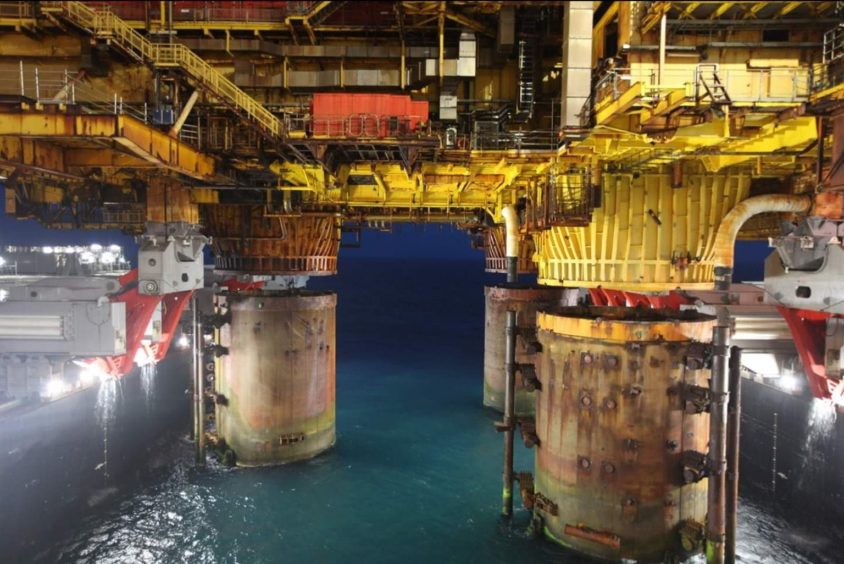
An academic has asked whether removing concrete structures within Shell’s Brent platform legs is the right thing to do as such an operation would include risk to life.
Last night Greenpeace said protestors would remain in place on the Brent Alpha and Bravo for “as long as needed” to get their message across.
They are protesting Shell’s plans to large concrete oil storage cells within the legs of the platforms in the sea.
However, Tom Baxter, a former senior lecturer at Aberdeen University, said taking the structures out would carry their own set of risks.
He added: “Shell have been through the risk analysis and the findings are that it is more risky to take this away than to leave it in place.
“These big gravity-based structures were put in place at a time when there was no thought to taking them away.
“You could take them away but one of the risks would be to people. So is this the right thing to do?
“Over centuries you might have some secretion at a rate that the surrounding ecosystem would be able to deal with.”
Shell submitted plans in 2017 to leave the giant legs of three of its four Brent platforms and some other infrastructure in the North Sea.
Concerns have been raised, with formal objections by Germany and the Netherlands, around the contents of 64 oil storage cells – concrete cases within those legs – being eventually released into the environment.
Shell’s preferred option is to leave the cells in place, with the cost of removing them for onshore treatment “disproportionate to any environmental legacy benefit”.
The firm believes the outer structure of the cells will last “hundreds of years”.
The oil itself is not free floating but bound to sediment comprised of sand, grit and water, which Shell said is encased within one metre thick reinforced concrete structures which will take “centuries” to degrade.
Shell said, as the structures do eventually degrade, the oil will be exposed to the water and gradually broken down by natural organic process.
An independent report published last week – and commissioned by the Dutch government – however stated the “timing and rate” of the contents being released into the environment is “highly uncertain”.
It said there is uncertainty around the future state of local ecosystems around the Brent field, “which could be more vulnerable”, in which case any release may have a larger impact that that assessed by Shell.
In June, the German government registered its formal objection to Shell’s plans after an Aberdeen-based consultancy – Scientia et Sagacitas – produced a report highlighting “major issues” with Shell’s assessments.
Part of the report stated there was “inadequate poor-quality data” relating to the contents of the storage cells.
It also described Shell’s assessment process as “flawed” with a bias to minimal decommissioning work.
Shell has long argued that its plans are safe and “environmentally sound”.
The Brent field started production in 1976.
Topsides for the platforms are being separately decommissioned.
Recommended for you

